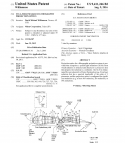@tokenanalyst,Getting a bit more technical wouldn't hurt anyone. There may be some operational technical differences because this is clearly marketed towards maskless lithography systems but this dudes look pretty capable of easily make Arf lasers for lithography scanners, they probably don't do it because there is not such market in Russia but China is a potential huge market for them if they put some effort into it.
View attachment 93498
I'm actually curious which maskless writer company this guy is working with. Most DUV maskless writer I'm aware of are with wavelength longer than iLine plus the KrF mask writer you shared. Earlier this year, I had seen a paper or news article that Nikon is working on their 248nm and 193nm maskless NGL system. I tried to research it but couldn't find any info on the web.
I thought Nikon was nuts when I read earlier this year they are working on 248nm & 193nm maskless writer. Now, hearing about a 193nm laser for a possible another 193nm maskless writer, piqued my interest. Couldn't figure out what people want with a 193nm maskless writer, did I miss anything?
multiple multi beam writer suppliers are still working on that technology. In R&D setting that would like to eliminate need or photomask, these multi-beam maskless writers serve this purpose with better resolution. In HVM, scanners serve this purpose. Where would 193nm maskless writer fit in? Your thoughts on this?


